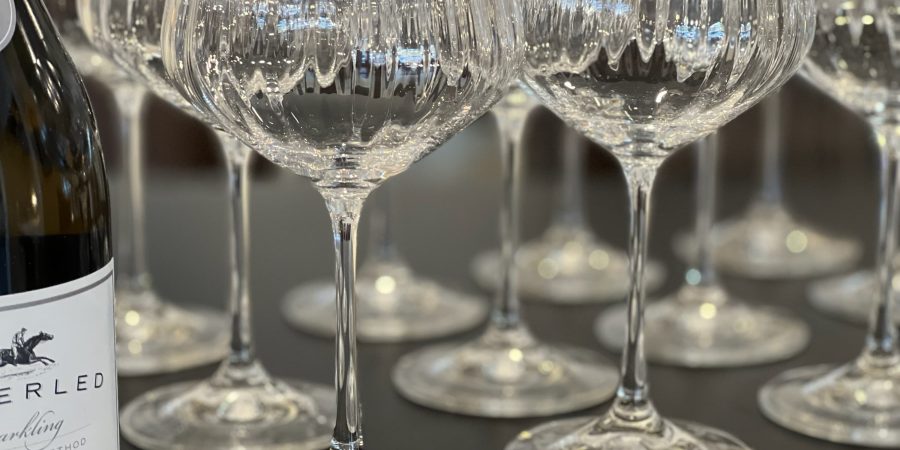Today is International Champagne Day!
And while not technically “Champagne”, I think we should all mark the occasion with a glass (or bottle!) of Somerled Sparkling Pinot Noir.
And while you’re doing that, shall we learn a little more about the “real” thing?
How it came about…
Turns out it was all a big mistake!
Winemakers from the champagne region were a little jealous of the reputation of wines coming from the Burgundy region. They decided to start trying to produce wines of similar quality. The one thing that was against them though was the fact that winters in the north of France are much cooler than in Burgundy. Not only did the grapes struggle to ripen – giving way to high levels of acidity and low sugar levels. But freezing temperatures in the cellar caused fermentation to stop.
Disaster!
And it only got worse…
Once Spring came around, the sleeping yeast cells woke up and started fermenting again! This caused the release of carbon dioxide which either made the bottles explode or if the bottles were lucky enough to survive, a wine that contained bubbles! They were horrified and considered this a wine fault.

Now, at this point, I am going to wipe my hands of making a comment about WHO should be credited with the invention of Champagne. Mostly because it seems that no one can agree on that point!
We do know, however, that a monk named Dom Pierre Pérignon invented the second fermentation in the bottle. This pretty much makes him the founder of the Champagne we know today. Interestingly, Dom Pérignon was also the first winemaker who produced white wine from red grapes.
What makes Somerled Sparkling so special?
Short answer: Rob Moody makes it!
Long-answer: it’s made in the traditional French method (or méthode traditionnelle).
Unlike the real deal from Champagne, sparkling wine can be made using a number of different methods. Given that the traditional method is by far the most labour intensive and expensive method, many of our Australian sparkling wines are not made in this way.
Ways to make Sparkling wine…
The Traditional Method:
The most important thing about the traditional method is that the process of turning a still wine into a sparkling wine occurs entirely inside the bottle.
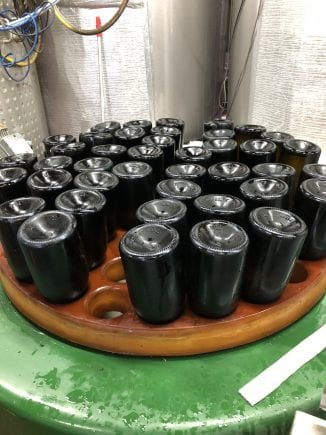 Let’s have a look at how it is done from start to finish though…
Let’s have a look at how it is done from start to finish though…
- Making the base wine: as with any wine the grapes are picked (usually early to preserve acidity) and fermented into a dry wine. If the base wine is a mix of varieties (eg. Pinot Noir and Chardonnay), the winemaker blends them together into what the French call a “cuvée” – the final sparkling wine blend.
- Tirage: Yeast and sugars are added to the cuvée to start the second fermentation and wines are bottled (and topped with crown seals).
- Secondary fermentation: the fermentation which happens inside the bottle to create the bubbles. It adds a little more alcohol (just over 1%) and creates carbon dioxide gas.
- Aging: the wines are then aged on the dead yeast cells (or “lees”) to develop texture in the wine. For champagne to be champagne it needs to be aged for a minimum of 15 months. Our Somerled sparkling is aged for around 18 months before its first release.
- Riddling: Funnily enough, consumers prefer their sparkling wine not to have dead yeast cells in the bottom of it! Riddling is the beginning of the process of removing the lees. It’s a tricky one, so let me come back to that in more detail in a bit. But basically, the bottles are gradually turned upside down so all the lees end up settling in the neck of the bottle.
- Disgorging: This is the final part of the “removing the crud from the bottle” process. The bottles are placed upside down into freezing liquid (see picture) which causes the yeast bits to freeze in the neck of the bottle. The crown cap is then popped off which allows the frozen chunk of lees to shoot out of the pressurised bottle.
- Dosage: Finally the bottles are topped up with a mixture of wine and sugar (usually in the form of grape juice). Then they are corked or crown-sealed and labelled.

Tank Method:
The major difference between the tank method and the traditional method is the removal of the individual bottle as the vessel used to turn a still wine into a sparkling one. Basically, the same process is done on the wine as a whole in a tank.
Transfer Method:
Identical to the Traditional method except that instead of riddling and disgorging, bottles are emptied into a pressurised tank and sent through pressurized filters to remove the lees.
Ancestral Method:
This method uses freezing temperatures to pause the fermentation mid-way for a period of months and then wines are bottled and the fermentation finishes, trapping the carbon dioxide in the bottle. Almost exactly like that happy mistake, I described above!
Continuous Method:
This method is used by the Russians and is by far the most convoluted method have ever seen to make… well, anything. That is all I have to say on the matter! If you want a real explanation read this!
Carbonation:
This is the one I really wanted to tell you about. It is the one that most Australian sparkling wine producers use (if they’re not using the traditional method). The carbonation method simply takes a still wine and carbonates it in a pressurised tank. Exactly the way soft drink is made.
Riddle me this
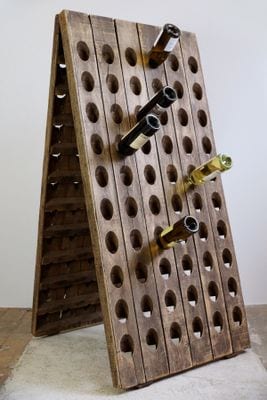 Ever seen one of these fancy wine racks?
Ever seen one of these fancy wine racks?
Pretty neat, hey?
Well, I hate to burst your bubble (ha!), but it’s not a wine rack. Not in the modern, aesthetically appealing way they are used these days anyway.
This is a riddling rack (or ‘pupitre’) and they are found by the hundred in the cellars of Champagne houses all across the region.
Riddling (or ‘remuage’) involves the gradual tilting of the bottle neck-down (‘sur pointe’), meanwhile rotating it by small increments, clockwise and anti-clockwise. As the angle of tilt increases, the forces of gravity draw the sediment into the neck.
Remuage is still sometimes done manually, using a shaking and twisting technique practiced over the centuries by skilled cellar masters. A good ‘remueur’ (bottle-turner) can handle roughly 40,000 bottles a day.
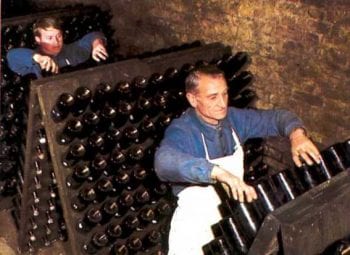 The bottles are placed neck down in the rack and rotated by stages. 1/8 or 1/4 of a turn at a time, to the right or left, with a chalk mark on the bottom of the bottle for reference. The objective is to consolidate the sediments and leave the wine crystal clear. Manual remuage takes 4-6 weeks and involves on average 25 turns per bottle.
The bottles are placed neck down in the rack and rotated by stages. 1/8 or 1/4 of a turn at a time, to the right or left, with a chalk mark on the bottom of the bottle for reference. The objective is to consolidate the sediments and leave the wine crystal clear. Manual remuage takes 4-6 weeks and involves on average 25 turns per bottle.
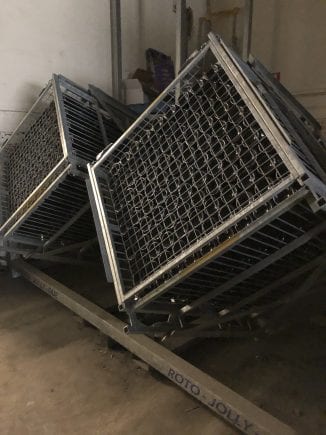 These days, automated remuage is much more common. It uses a machine called a ‘gyropalette’ and can process 500 bottles in a single operation. Gyropalettes work 24 hours a day and take a fraction of the time. Just one week instead of six.
These days, automated remuage is much more common. It uses a machine called a ‘gyropalette’ and can process 500 bottles in a single operation. Gyropalettes work 24 hours a day and take a fraction of the time. Just one week instead of six.
International Rob Opens His Cellar Day!
While International Champagne Day is exciting and all, please don’t forget that this coming Sunday (30th October) we’ll be releasing a special selection of wines from Rob’s own cellar!
They’ll be released at precisely 12pm (Adelaide time) and will be for sale via our website.
Keep an eye on your email for further details.
